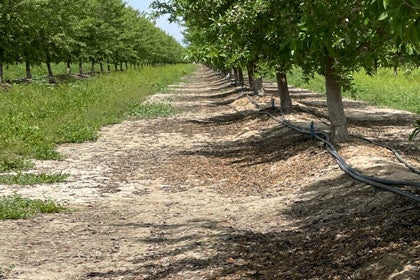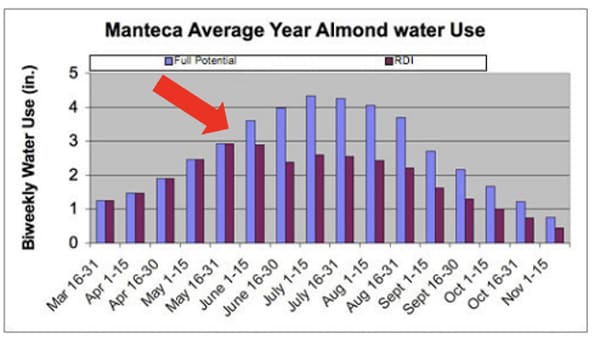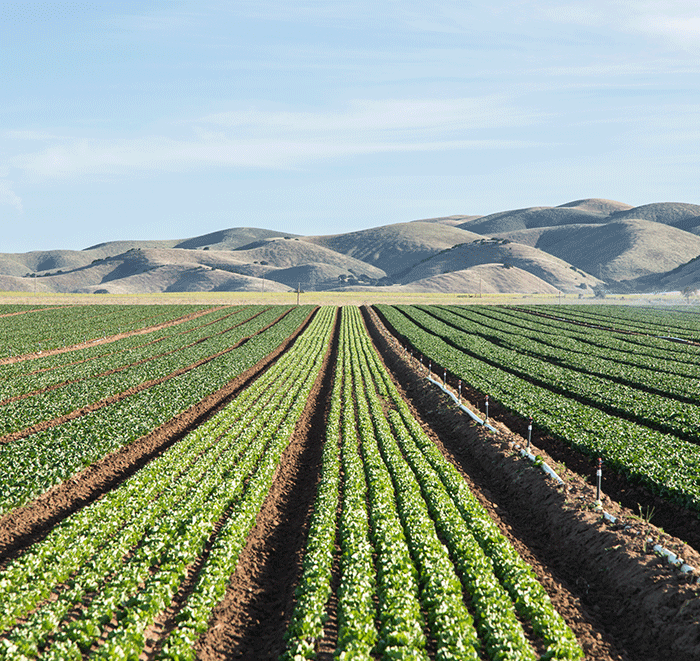

Irrigation Strategy When Water Supply is Limited
California’s agricultural waterscape is looking relatively grim for the 2022 irrigation season. Many growers will be making irrigation decisions with a limited water supply weighing heavily on their minds. Water allocations in many irrigation districts have been falling for the past several years and groundwater sources have become increasingly stressed due to lack of recharge. Drought has had a profound impact on water quality over the past few years which can compound soil salinization in the root zone when leaching strategies aren’t practiced. Growers with compromised water supply should make irrigation decisions based on tree and/or crop development stages throughout the season.
Depending on the extent of the water supply reduction, growers should adopt either a uniform deficit irrigation approach across the entire season or an approach that matches the degree of deficit to the crop stage. When growers experience mild to moderate water restrictions (>80% of ETc), a uniform deficit of crop evapotranspiration across the entire season is most appropriate (Goldhamer et al., 2006). This means irrigation applications of approximately 80% of ETc during a given period is the best strategy. When growers are dealing with a more severe curtailment of water, a more strategic and deliberate deficit strategy is appropriate. Because future yield potential in subsequent years is more impacted by early season stress that hinders early canopy and fruiting position development, a taper method of deficit irrigation can be employed.
The table below (U.C. Drought Management, 2017) illustrates a tapered approach to regulated deficit irrigation. This strategy means full ETc should be applied during periods sensitive to stress (Spring) while deficits can be applied during more tolerant development periods (Summer). A portable pressure chamber is a great tool when monitoring stress levels across critical periods throughout the growing season. For growers interested in learning more about measuring Stem Water Potential, feel free to reach out to your Wilbur-Ellis representative.

Calculating a Leaching Fraction


I just spent the early part of this article outlining the water supply challenges that growers are facing this year so an in-season leaching fraction may be unrealistic for many growers. Dormancy leaching consists of “pre-irrigating” ahead of any significant rain event (~1.0”) to saturate the soil and encourage deep percolation. By leaching during dormancy growers can potentially reduce stress on their aquifers by watering outside of peak pumping periods. While irrigation management during drought conditions can be tricky, this article can be used as a reference when making potentially difficult decisions throughout the season to minimize damage to the orchard as well as yield.
References
Goldhamer, D.A., Viveros, M. & Salinas, M. Regulated deficit irrigation in almonds: effects of variations in applied water and stress timing on yield and yield components. Irrig Sci 24, 101–114 (2006). https://doi.org/10.1007/s00271-005-0014-8
U.C. Drought Management. (2017). Taken from: https://ucmanagedrought.ucdavis.edu/
Matt Comrey, Wilbur-Ellis Technical Sales Agronomist

